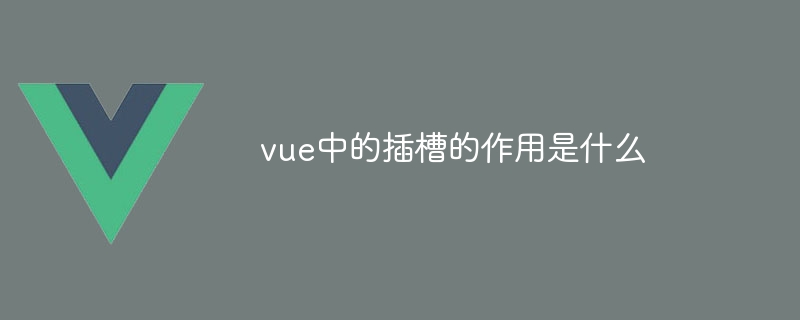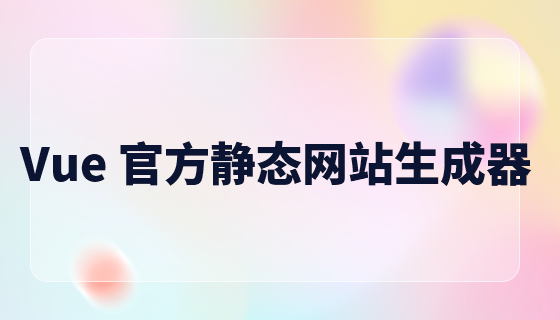插槽在 Vue.js 中允许组件插入自定义内容,实现代码复用和灵活性。插槽如何工作:父组件通过 <slot> 创建插槽。子组件通过 <template> 和 v-slot 将内容插入父组件插槽中。插槽可以使用 name 属性指定名称,以明确插入位置。作用:代码复用灵活性内容分离组件间通信例如,可创建可复用的表单组件,自定义标题和提交按钮。

插槽在 Vue.js 中的作用
插槽是 Vue.js 中一项重要的功能,它允许在组件内插入自定义内容,从而实现代码复用和灵活性。
插槽如何工作
在父组件中,可以通过 <slot> 标签创建插槽。插槽定义了一个占位符,子组件可以填充此占位符。在子组件中,通过 <template> 标签和 v-slot 指令将内容插入父组件的插槽中,如下所示:
立即学习“前端免费学习笔记(深入)”;
<code class="html"><!-- 父组件 -->
<my-component>
<slot name="header"></slot>
<slot name="content"></slot>
<slot name="footer"></slot>
</my-component>
<!-- 子组件 -->
<template>
<div>
<h1 v-slot:header>插槽标题</h1>
<p v-slot:content>插槽内容</p>
<button v-slot:footer>按钮</button>
</div>
</template></code>命名插槽
插槽可以使用 name 属性指定名称,这样就可以更明确地指定插入内容的位置。例如,在上面的示例中,我们使用了 header、content 和 footer 名称来指定插槽的位置。
作用
插槽在 Vue.js 中有以下作用:
示例
例如,我们可以使用插槽创建一个可复用的表单组件:
<code class="html"><!-- 父组件 -->
<my-form>
<template v-slot:title><h2>填写表单</h2></template>
<template v-slot:submit-button><button type="submit">提交</button></template>
</my-form>
<!-- 子组件 -->
<template>
<form>
{{ title }}
<input type="text" placeholder="姓名" />
<input type="email" placeholder="电子邮件" />
{{ submitButton }}
</form>
</template></code>通过使用插槽,我们可以自定义表单的标题和提交按钮,而不会破坏父组件的结构。
以上就是vue中的插槽的作用是什么的详细内容,更多请关注php中文网其它相关文章!

每个人都需要一台速度更快、更稳定的 PC。随着时间的推移,垃圾文件、旧注册表数据和不必要的后台进程会占用资源并降低性能。幸运的是,许多工具可以让 Windows 保持平稳运行。




Copyright 2014-2025 https://www.php.cn/ All Rights Reserved | php.cn | 湘ICP备2023035733号